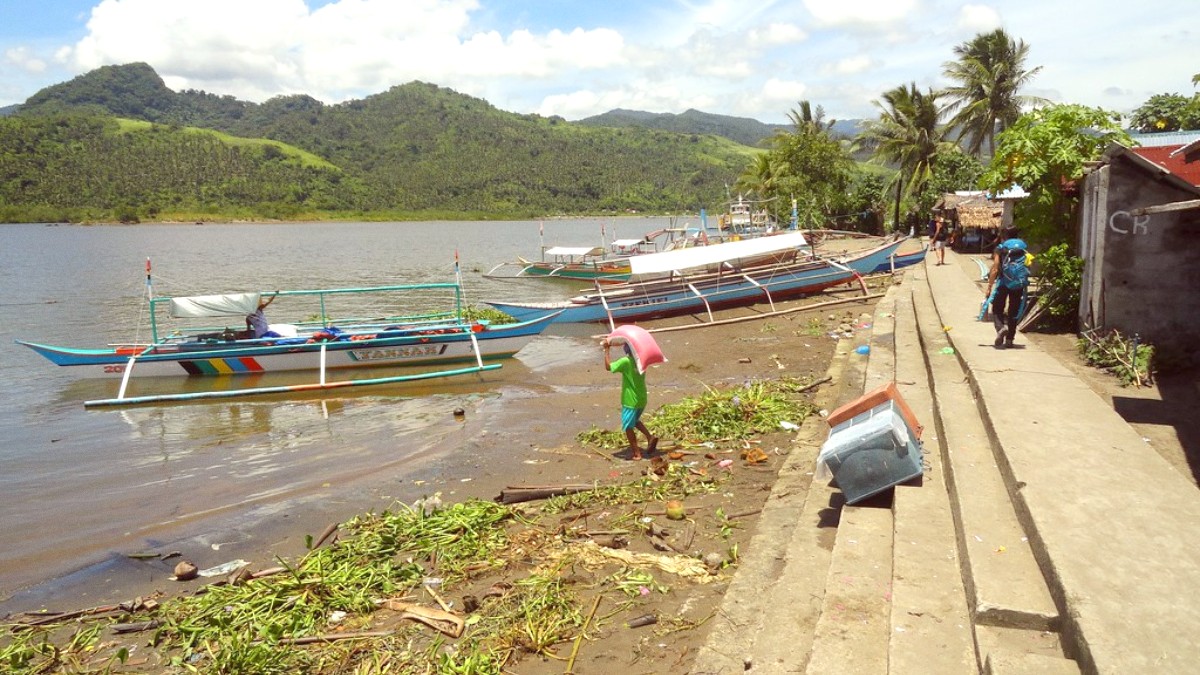
Palawan, Philippines
Filipino dishes typically balance savory, sour, and sometimes salty tastes. Common ingredients include vinegar, soy sauce, garlic, onions, ginger, and chili. Coconut milk frequently enriches southern dishes.
Calamansi, a small Philippine lime, contributes a distinct citrusy tang.
Filipinos typically use a spoon and fork, with the spoon for eating. Eating with hands ("kamayan" style) is also common, especially for informal meals, using the right hand.
Sharing food at the table is customary; dishes are served family-style. It is polite to offer food to others before serving yourself.
Not strictly required, but tipping for good service is appreciated, especially in tourist establishments. Some restaurants include a 10% service charge.
Filipino ceviche with raw fish marinated in vinegar, calamansi, ginger, onions, and chili. Refreshing and tangy.
Widely available at local eateries.
The unofficial national dish. Meat (chicken/pork) stewed in vinegar, soy sauce, garlic, bay leaves. Tender and flavorful.
A staple everywhere in the Philippines.
A sour and savory soup/stew, typically with tamarind, meat (pork/shrimp/fish), and vegetables. Comforting and distinct.
A Filipino favorite for its unique tang.
A beloved cold dessert with shaved ice, evaporated milk, sweet beans, jellies, fruits, topped with ube ice cream or leche flan.
Abundant tropical fruits like mangoes, bananas, pineapples, and papayas are widely available and delicious.
True fine dining establishments are very limited to none in Sabang. The dining scene favors relaxed, casual meals. Some higher-end resorts might have more refined dining options.
Several resort restaurants cater to a mid-range budget. They provide a comfortable dining environment, broader menus with some Western dishes, and table service. Suitable for a pleasant meal in a relaxed setting.
Here you find authentic and affordable food. Carinderias are small, local eateries with pre-cooked Filipino dishes. Street food stalls offer quick snacks around the pier.
Sabang does not have large, formal markets or dedicated food halls. Small local stores ("sari-sari stores") sell basic provisions, snacks, and drinks.
No large markets in Sabang.
For a more extensive market experience, you would need to visit Puerto Princesa City.
Visit Puerto Princesa for larger markets.
Mainly Filipino food.
Some resorts might have generic Western dishes.
Expect local tastes to be the main focus.
Few, if any, specific international restaurants.
Halal and Kosher options are very limited. Philippines is mainly Christian. Stick to fresh fruits, vegetables, and fish, and ask about cooking methods to avoid strict cross-contamination.
Limited options, inquire directly.
Awareness of specific allergens is generally low. Many dishes use soy sauce (contains wheat). Clear communication is paramount for severe allergies.
Low awareness, communicate clearly.
A translation card can be a valuable tool for explaining dietary restrictions. Search for food allergy translation cards on Amazon.
Many Filipino dishes use soy sauce (which contains wheat). Ingredients are not always clearly labeled, so direct inquiry is best.
Carinderias offer a genuine taste of Filipino home cooking.
You get to interact with local proprietors.
Choose from a selection of pre-cooked dishes by pointing at what looks good.
Choose street food vendors that appear busy and maintain good hygiene practices.
Look for clean stalls.
Drink bottled water only. Avoid tap water unless it has been properly filtered or boiled.
Stay hydrated safely.
Sabang does not have regular food festivals. Filipino festival foods might be present during national holidays.
Structured culinary experiences like cooking classes are not widely available in Sabang. Look to Puerto Princesa for these.
Formal farm visits or food production tours are not a major tourism offering in Sabang.
Embrace the local cuisine for an authentic experience. Sabang is not a culinary hotspot for international flavors, but a place for genuine Filipino tastes.